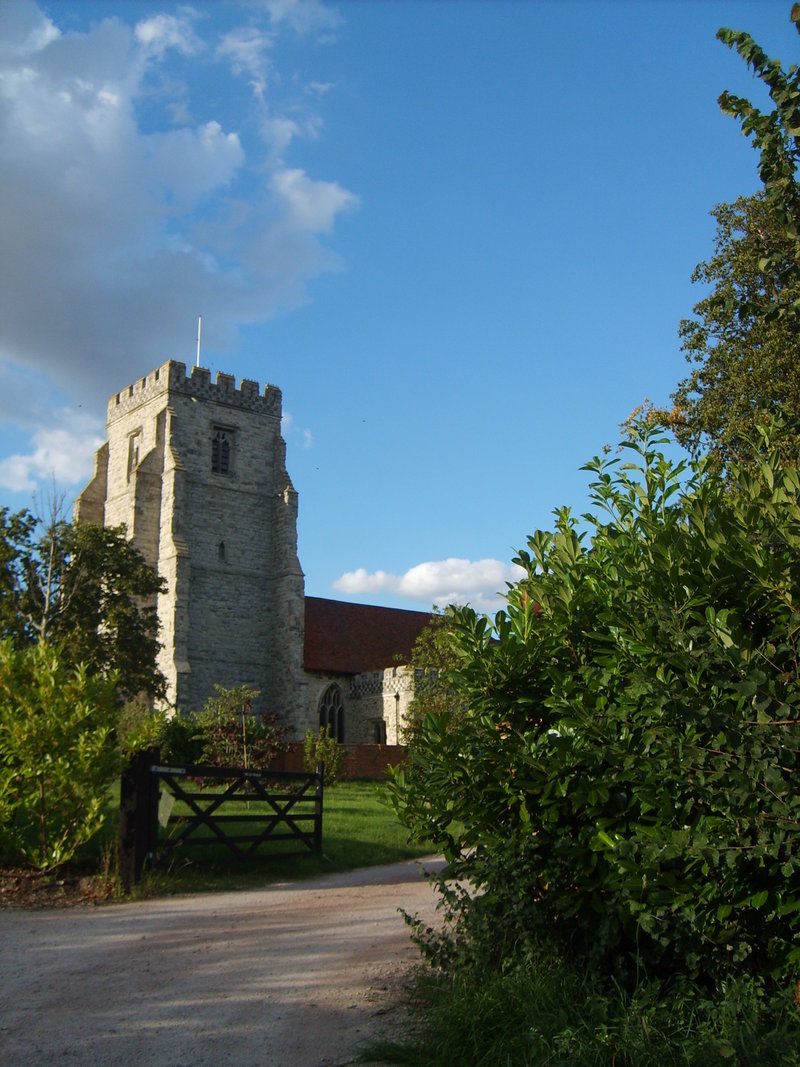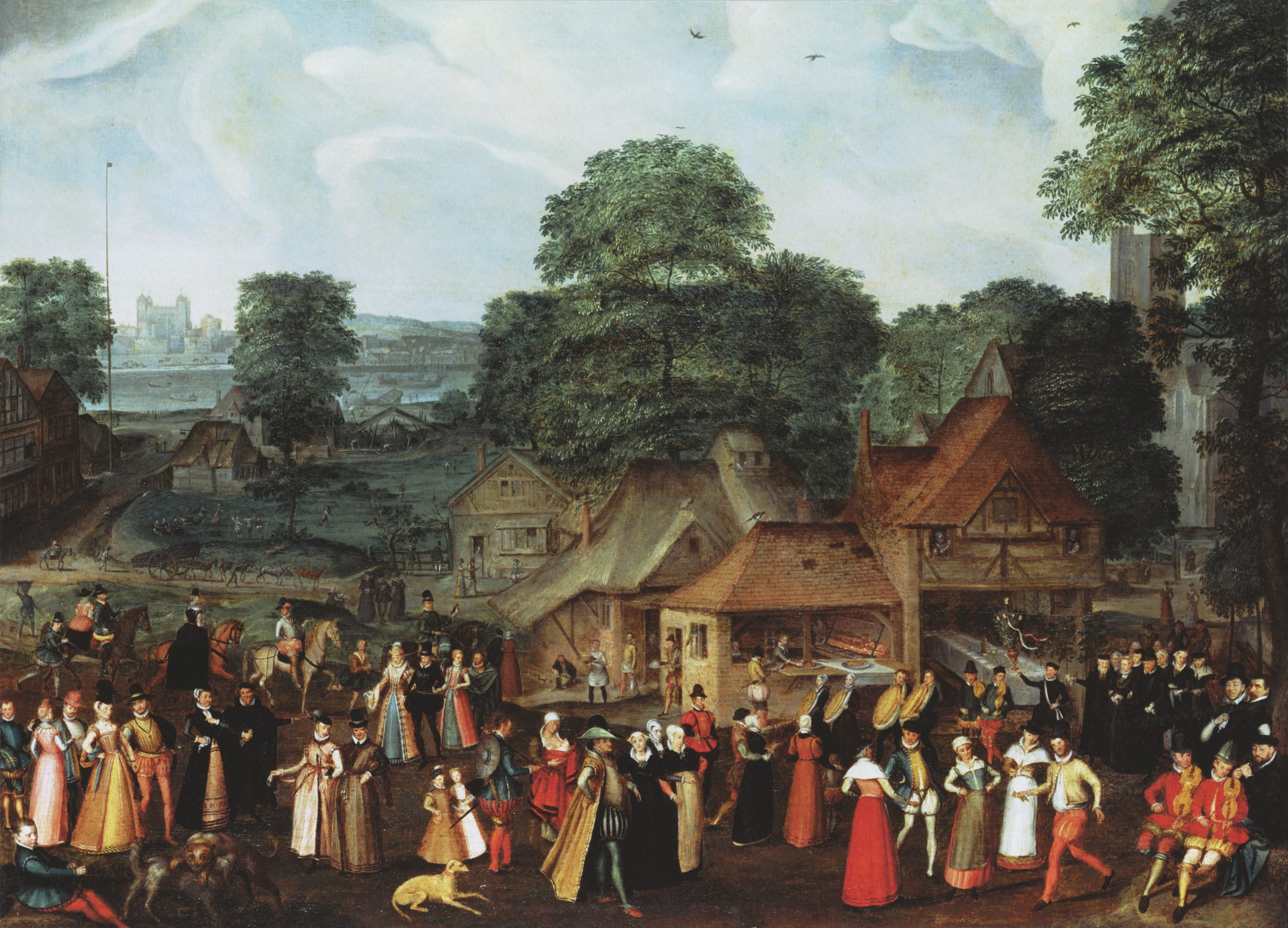|
James Murrell
James Murrell (c. 1785 – 16 December 1860), also known as Cunning Murrell, was an English cunning man, or professional folk magician, who spent most of his life in the town of Hadleigh in the eastern English county of Essex. In this capacity, he reportedly employed magical means to aid in healing both humans and animals, exorcising malevolent spirits, countering witches, and restoring lost or stolen property to its owner. Born in Rochford, Essex, Murrell grew up in the area before moving to Southwark in London, where he was married in 1812. He had seventeen children with his wife, and the family later moved back to Essex, settling in Hadleigh, where Murrell gained work as a shoemaker. At some point he also began working as a cunning man, gaining fame for his work in this field on both sides of the Thames Estuary. Describing himself as "the Devil's Master", he cultivated an air of mystery about himself, also experimenting with the creation of iron witch bottles. On a nu ... [...More Info...] [...Related Items...] OR: [Wikipedia] [Google] [Baidu] |
Rochford
Rochford is a town in Essex, England, north of Southend-on-Sea, from London and from Chelmsford, the county town. At the 2011 census, the Civil parishes in England, civil parish, which includes the town and London Southend Airport, had a population of 8,471. History The town is the main settlement in the Rochford district, and takes its name from Rochefort, Old English for ‘Ford of the Hunting Dogs’. The River Roach was originally called the Walfleet (‘Creek of the foreigners’). It was renamed the Roach in what is known as a back formation. This is where it is assumed that Rochford means ford over the River Roach so they renamed the river to fit the theory. The town runs into suburban developments in the parishes of Ashingdon and Hawkwell. Kings Hill, in Rochford, was notable for containing the Lawless Court up until the 19th century. Peculiar People In 1837 James Banyard (14 November 1800 – 1863) (a reformed drunk and Wesleyan preacher) and William Bridges (preac ... [...More Info...] [...Related Items...] OR: [Wikipedia] [Google] [Baidu] |
Ralph Merrifield
Ralph Merrifield (22 August 1913 – 9 January 1995) was an English museum curator and archaeologist. Described as "the father of London's modern archaeology", Merrifield was a specialist in the archaeology of both Roman London and magical practices, publishing six books on these subjects over the course of his life. Merrifield began his career in 1930 as an assistant at Brighton Museum. In 1935 he gained an external degree in anthropology from the University of London. During the Second World War he served in the Royal Air Force. In 1950 he became assistant keeper of the Guildhall Museum in London. In 1956 he relocated to Accra to oversee the opening of the new National Museum of Ghana, before returning to work at the Guildhall Museum. He produced a synthesis of known material on the archaeology of Roman London, published as ''The Roman City of London'' in 1965. He was appointed senior keeper of the new Museum of London on its establishment in 1976, and soon after was promot ... [...More Info...] [...Related Items...] OR: [Wikipedia] [Google] [Baidu] |
Suffolk
Suffolk () is a ceremonial county of England in East Anglia. It borders Norfolk to the north, Cambridgeshire to the west and Essex to the south; the North Sea lies to the east. The county town is Ipswich; other important towns include Lowestoft, Bury St Edmunds, Newmarket, and Felixstowe which has one of the largest container ports in Europe. The county is low-lying but can be quite hilly, especially towards the west. It is also known for its extensive farming and has largely arable land with the wetlands of the Broads in the north. The Suffolk Coast & Heaths and Dedham Vale are both nationally designated Areas of Outstanding Natural Beauty. History Administration The Anglo-Saxon settlement of Suffolk, and East Anglia generally, occurred on a large scale, possibly following a period of depopulation by the previous inhabitants, the Romanised descendants of the Iceni. By the fifth century, they had established control of the region. The Anglo-Saxon inhabitants later b ... [...More Info...] [...Related Items...] OR: [Wikipedia] [Google] [Baidu] |
Amulet
An amulet, also known as a good luck charm or phylactery, is an object believed to confer protection upon its possessor. The word "amulet" comes from the Latin word amuletum, which Pliny's ''Natural History'' describes as "an object that protects a person from trouble". Anything can function as an amulet; items commonly so used include statues, coins, drawings, plant parts, animal parts, and written words. Amulets which are said to derive their extraordinary properties and powers from magic or those which impart luck are typically part of folk religion or paganism, whereas amulets or sacred objects of formalised mainstream religion as in Christianity are believed to have no power of their own without faith in Jesus and being blessed by a clergyman, and they supposedly will also not provide any preternatural benefit to the bearer who does not have an appropriate disposition. Talisman and amulets have interchangeable meaning. Amulets refer to any object which has the power to av ... [...More Info...] [...Related Items...] OR: [Wikipedia] [Google] [Baidu] |
Telescope
A telescope is a device used to observe distant objects by their emission, absorption, or reflection of electromagnetic radiation. Originally meaning only an optical instrument using lenses, curved mirrors, or a combination of both to observe distant objects, the word ''telescope'' now refers to a wide range of instruments capable of detecting different regions of the electromagnetic spectrum, and in some cases other types of detectors. The first known practical telescopes were refracting telescopes with glass lenses and were invented in the Netherlands at the beginning of the 17th century. They were used for both terrestrial applications and astronomy. The reflecting telescope, which uses mirrors to collect and focus light, was invented within a few decades of the first refracting telescope. In the 20th century, many new types of telescopes were invented, including radio telescopes in the 1930s and infrared telescopes in the 1960s. Etymology The word ''telescope'' was coin ... [...More Info...] [...Related Items...] OR: [Wikipedia] [Google] [Baidu] |
United Kingdom Census 1851
The United Kingdom Census of 1851 recorded the people residing in every household on the night of Sunday 30 March 1851, and was the second of the UK censuses to include details of household members. However, this census added considerably to the fields recorded in the earlier 1841 UK Census, providing additional details of ages, relationships and origins, making the 1851 census a rich source of information for both demographers and genealogists. The 1851 census for England and Wales was opened to public inspection at the Public Record Office in 1912 (the 100-year closure rule was not in effect at the time), and is now available from The National Archives as part of class HO 107. The 1851 census for Scotland is available at the General Register Office for Scotland. An 1851 census was taken in Ireland but most of the records have been destroyed; those that remain are held by the Public Record Office of Northern Ireland (for those counties of Ireland which remain in the UK) or the Na ... [...More Info...] [...Related Items...] OR: [Wikipedia] [Google] [Baidu] |
United Kingdom Census 1841
The United Kingdom Census of 1841 recorded the occupants of every United Kingdom household on the night of Sunday 6 June 1841. The enactment of the Population Act 1840 meant a new procedure was adopted for taking the 1841 census. It was described as the "first modern census" as it was the first to record information about every member of the household, and administered as a single event, under central control, rather than being devolved to a local level. It formed the model for all subsequent UK censuses, although each went on to refine and expand the questions asked of householders. It was important for early demography, demographic analysis of the United Kingdom population and remains of interest to historians, demographers and genealogy, genealogists, although the information about each person is quite limited compared with that available from later censuses. The total population of England, Wales and Scotland was recorded as 18,553,124. Background Due to the Population Act ... [...More Info...] [...Related Items...] OR: [Wikipedia] [Google] [Baidu] |
Canewdon
Canewdon is a village and civil parish in the Rochford district of Essex, England. The village is located approximately northeast of the town of Rochford, while the parish extends for several miles on the southern side of the River Crouch. Canewdon is situated on one of the highest hills of the Essex coastline, from which St Nicholas's Church affords wide views of the Crouch estuary. East of the village lies the island of Wallasea, popular for sailing, and a wetland sanctuary for wildlife. The name Canewdon is derived from Old English words meaning 'the hill of Cana's people' and not, as is sometimes claimed, from Canute the Great, who fought at the Battle of Ashingdon nearby in 1016 against the English King Edmund II. History Early history A number of sites in and around Canewdon reflect occupation of the land from at least the Neolithic period (4,000–2,000 BC). For instance, gravel extraction from early 20th century found prehistoric remains, such as a hoard of Neolithic ... [...More Info...] [...Related Items...] OR: [Wikipedia] [Google] [Baidu] |
Bermondsey
Bermondsey () is a district in southeast London, part of the London Borough of Southwark, England, southeast of Charing Cross. To the west of Bermondsey lies Southwark, to the east Rotherhithe and Deptford, to the south Walworth and Peckham, and to the north is Wapping across the River Thames. It lies within the historic county boundaries of Surrey. History Toponymy Bermondsey may be understood to mean ''Beornmund''s island; but, while ''Beornmund'' represents an Old English personal name, identifying an individual once associated with the place, the element "-ey" represents Old English ''eg'', for "island", "piece of firm land in a fen", or simply a "place by a stream or river". Thus Bermondsey need not have been an island as such in the Anglo-Saxon period, and is as likely to have been a higher, drier spot in an otherwise marshy area. Though Bermondsey's earliest written appearance is in the Domesday Book of 1086, it also appears in a source which, though surviving only in ... [...More Info...] [...Related Items...] OR: [Wikipedia] [Google] [Baidu] |
St Olave's Church, Southwark
St Olave's Church, Southwark was a church in Southwark, England which is believed to be mentioned in the Domesday Book of 1086. It was located on Tooley Street which is named after the church, i.e. 't'olous'. It became redundant in 1926 and was demolished. It is now the location of St Olaf House, which houses part of the London Bridge Hospital. Dedication The church was dedicated to Olav Haraldsson, an early King of Norway, who attempted to convert his people to Christianity and was martyred in 1030. Before this, in 1014, he was a prince and an ‘ally’ (i.e. mercenary) of King Æthelred the Unready, fighting the Danes. While they were occupying the wooden London Bridge, Olav is said to have tied his long-boats to the bridge supports and pulled it down. The church’s probable beginning is as a private chapel of Godwin, Earl of Wessex from at least 1018, and his Southwark interest was probably contemporary to this. He would probably have known Olav personally, so the dedica ... [...More Info...] [...Related Items...] OR: [Wikipedia] [Google] [Baidu] |







